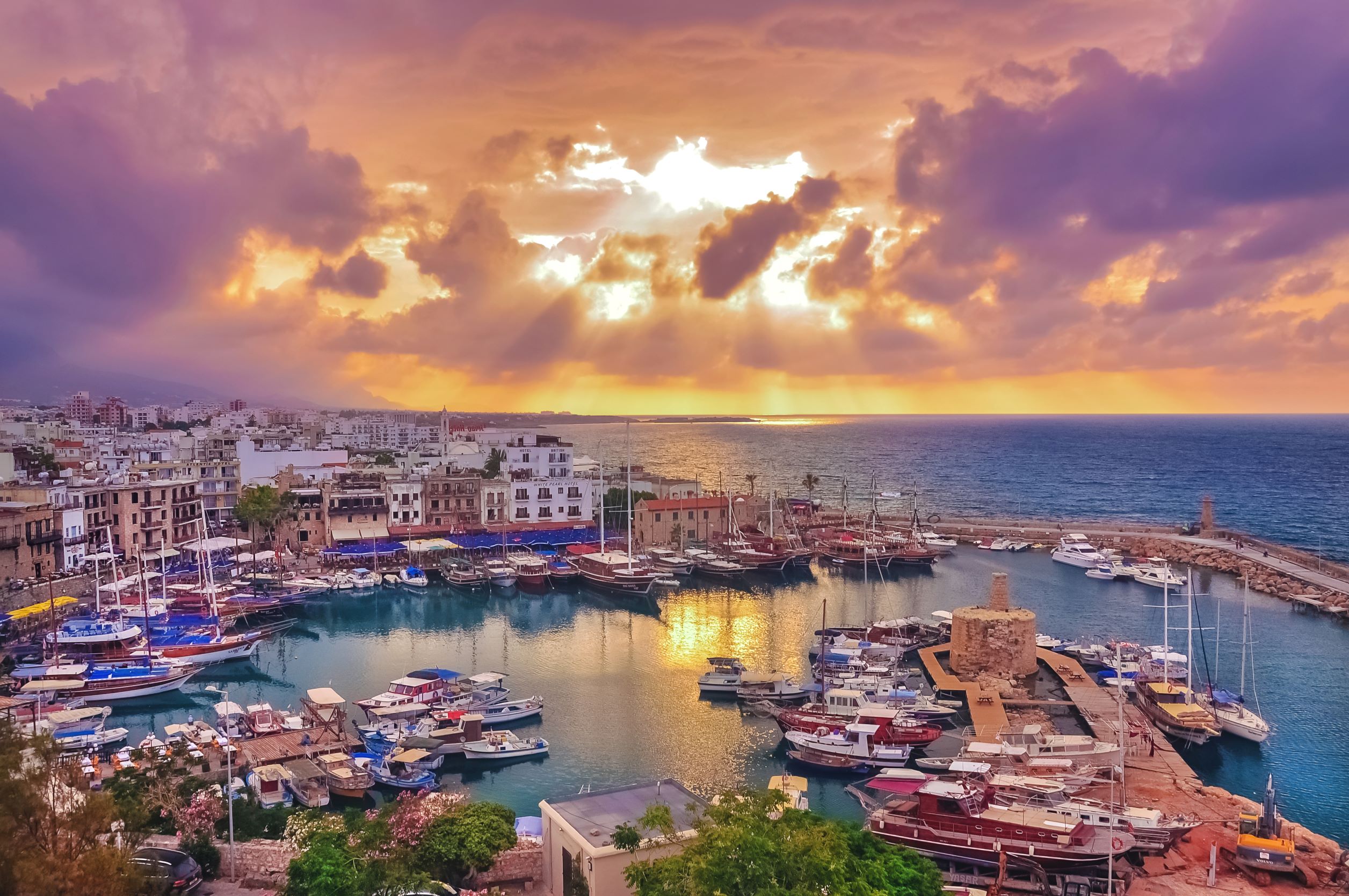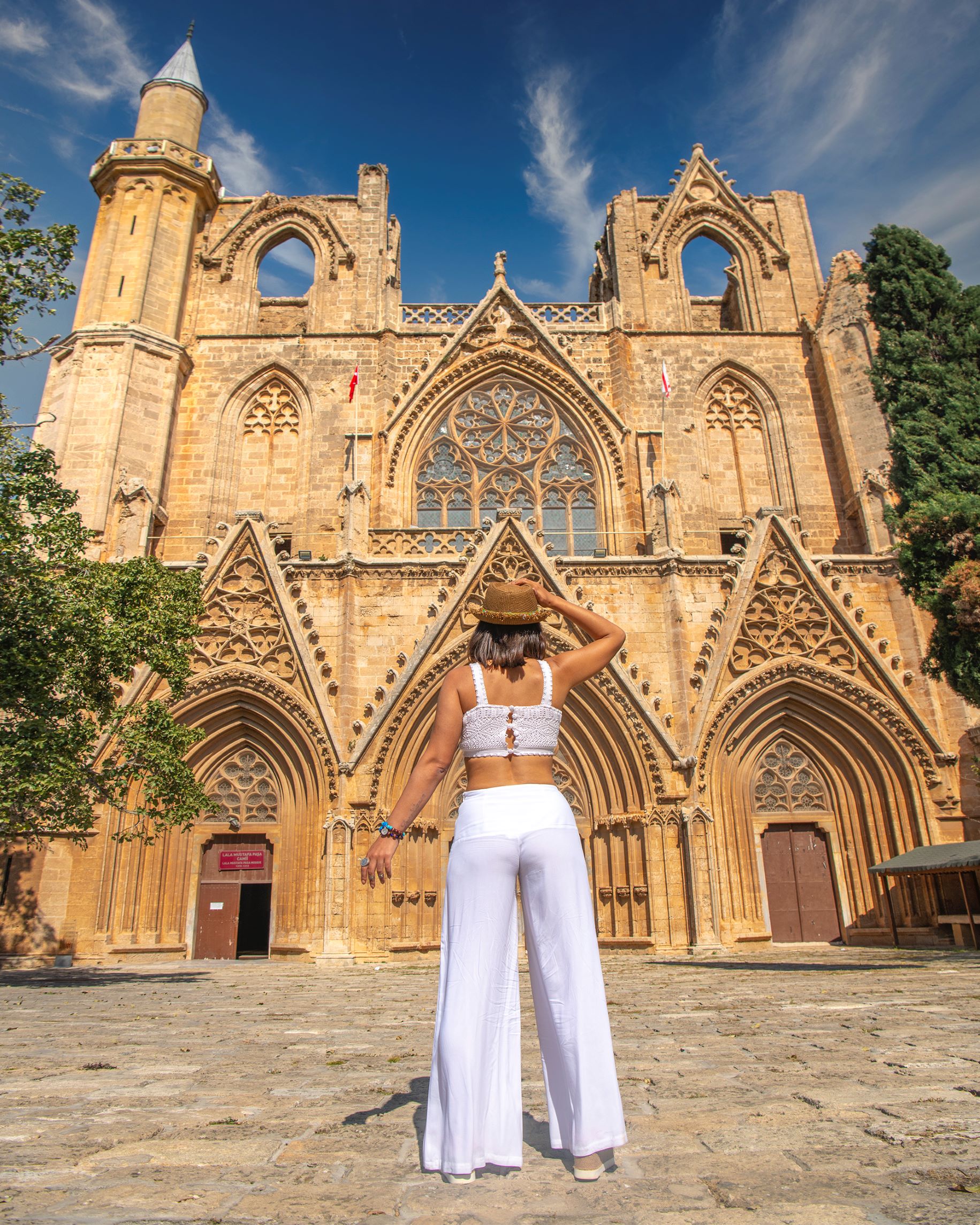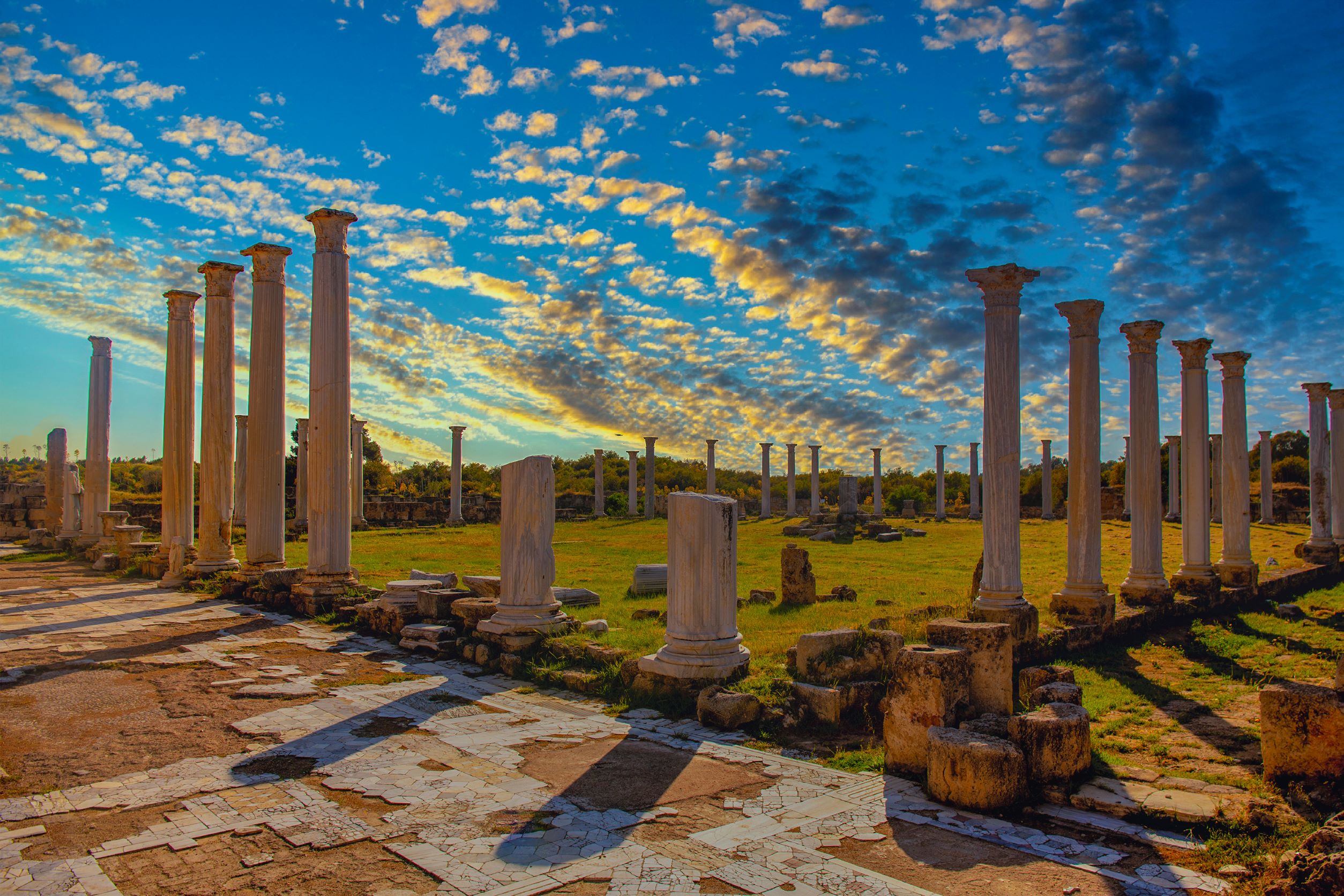Culture & Travel
13 May 2025Cyprus, with its golden Mediterranean beaches, historic landmarks, and natural beauty, is one of the most beloved holiday destinations. This small island country, rich in multicultural history, has so much to offer. If you’re ready to explore the must-see spots that should definitely be part of your travel route, let’s take a closer look at its cities and discover what makes each one special.
Kyrenia
Harbor and Castle
Believed to have been founded around 1000 BC, Kyrenia is located just 40 miles south of the Anatolian coast, making it one of the closest settlements to Turkiye across the Mediterranean. Due to its strategic location, it has long served as a docking point for cargo ships navigating the sea.
Today, its ancient, horseshoe-shaped harbor is surrounded by restaurants and bars that seem to compete with one another to offer the most memorable atmosphere—all while treating guests to beautiful views and historic charm.

Right next to the marina, you'll find the Kyrenia Castle, originally built by the Byzantines and later expanded by the Lusignans. With architectural touches added by the Venetians and Ottomans, the castle features a stunning blend of styles. Inside, you’ll discover the Church of St. George, Lusignan and Venetian towers, ancient tombs from Kırnı, cisterns, and dungeons from the Lusignan era.
But the most remarkable part of the castle is the Shipwreck Museum, which displays one of the oldest shipwrecks in the world—a must-see for history lovers.
Karmi Village
Located on the slopes west of Kyrenia, Karmi is a hillside village that was discovered and settled by British elites in the early 1900s, during Cyprus’s time as a British colony. During the conflicts and war periods on the island, many residents abandoned their homes. After peace was restored, the newly formed Turkish Republic of Northern Cyprus (TRNC) invited foreign residents back—granting them permission to live in the village under the condition that they restore the houses.
Karmi is now one of the most charming villages in Northern Cyprus, known for its well-preserved homes, narrow walking paths, quirky street names, and colorful flowers blooming in every garden. Add to that the fresh mountain and sea air, and you’ll find it hard not to fall in love with the place.
You can park your car near the Virgin Mary Church, which sits in the village center, and begin your walk from the path to the right of the church. A small spring flows alongside the stone steps, offering a refreshing companion throughout your walk. One of the village’s unique photo spots is the red British-style telephone booth, a favorite among tourists. And let’s not forget the village cats—large, healthy, and famously photogenic!
St. Hilarion Castle
Built on the northern slopes of the Kyrenia Mountains (Beşparmak Mountains), St. Hilarion Castle offers one of the most breathtaking panoramic views of Kyrenia. Sitting at an altitude of 700 meters, reaching the top of the castle requires some effort—you’ll need to climb around 500 steps.
The castle, built atop twin peaks, was originally used as a monastery. After a peaceful period lasting over 140 years, it later served as a military watch post and a retreat for Lusignan nobles. Despite the climb, the view from the top is well worth the effort.

Among the most fascinating features of this three-section castle are its drawbridge, the roofless church, and the famous Queen’s Window—a lookout point with one of the best panoramic views. Its resemblance to the towers seen in Disney fairy tales is no coincidence. With its mystical, storybook charm, St. Hilarion Castle is known to have inspired many artists—including Walt Disney himself.
Lefkoşa (Nicosia)
The Büyük Han (Great Inn)
Construction of the Büyük Han (Great Inn) began in 1572, just one year after the Ottoman Empire conquered Cyprus on August 1, 1571. The inn is especially known for its architectural resemblance to Koza Han in Bursa. While it also bears some similarity to the Kumarcılar Hanı in Nicosia, it is much larger in size.
With its pointed arches, domes, and rooms covered with vaulted ceilings, the Büyük Han stands as one of the most significant historic landmarks in Nicosia—a must-see for anyone interested in Ottoman architecture and Cypriot heritage.

Famagusta (Mağusa)
Lala Mustafa Pasha Mosque
Originally built between 1298 and 1312 during the Lusignan period, this structure is considered one of the most beautiful examples of Gothic architecture in the entire Mediterranean region. Its most striking and well-preserved feature is the western façade, which was architecturally inspired by Reims Cathedral in France.
The building boasts a unique Gothic-style ornate window, and in the courtyard, the Venetian Loggia—dating back to the 16th century—has been repurposed and now serves as a fountain (şadırvan) for ablution.

St. Barnabas Monastery
Born in Salamis to a Jewish family, St. Barnabas received his education in Jerusalem before returning to Cyprus. In 45 AD, he began working alongside St. Paul to spread Christianity. Because of these efforts, he was killed by his fellow citizens, and his body was hidden in a swamp to be discarded at sea.
However, his disciples witnessed what happened, recovered his body, and buried it in an underground cave west of Salamis, placing on his chest a copy of the Gospel of St. Matthew, said to have been written by the Evangelist himself.
For many years—until 432 AD—the location of his grave remained a mystery. According to legend, Bishop Anthemios was guided to it in a dream.
Following this revelation, St. Barnabas Monastery was built by the emperor’s command directly above the burial site. Today, the rooms once used by priests have been restored and transformed into an archaeological museum. The museum houses a rich collection of 18th-century icons, along with various artifacts tracing Cyprus’s history from the Neolithic era to the Roman period.
Salamis Ancient City
Salamis, originally founded as an Achaean colony, later became linked to Teucer, the founder of the Salamis Island in Greece. Teucer is also credited with founding this Cypriot city, writing his name into ancient history.
The legend of its founding tells that after the Trojan War, Teucer brought his fellow soldiers and a group of captured individuals to Cyprus. After some time, they arrived at the site of present-day Salamis and established a new city.

Located just 6 kilometers north of Famagusta, the ancient city of Salamis attracts thousands of history enthusiasts every year with its abundance of archaeological details waiting to be discovered. The site is easily walkable, and among its most notable ruins are the Temple of Zeus, a gymnasium, theater, forum, ancient baths, marketplaces, and royal tombs.
Karpaz
When you look at a map of Cyprus, the Karpaz Peninsula stands out in the northeastern corner of the island—and it has drawn attention throughout history due to its untouched natural beauty. Once you visit this unique destination, you’ll understand exactly why it’s so special.
The most iconic landmark in the region is the Apostolos Andreas Monastery, which also comes with a fascinating legend. According to the story, St. Andrew, one of the apostles of Jesus, stopped in Karpaz on his way to Jerusalem to look for water. He struck his staff into the sand, and water miraculously emerged. A sailor who was blind in one eye washed his face with the spring water—and miraculously regained his sight.
Following this event, it was decided that a chapel should be built on the very spot where St. Andrew had opened the spring.
Another must-visit destination in Karpaz is the Dipkarpaz National Park, home to the famous "Golden Beach". Known for its breathtaking beauty and the unique experiences it offers, the park continues to captivate everyone who visits. Whether you're there for the untouched nature or the serene coastline, this park is a true gem of the peninsula.
Güzelyurt
Soli Ruins
Soli, one of the most important ancient city-kingdoms established in Cyprus, dates back to around 700 BC. The basilica built here is believed to be one of the earliest churches on the island. With its courtyard surrounded by columns, the church is particularly famous for its mosaic floor, adorned with geometric patterns and animal motifs—most of which have remarkably survived to this day.
Among the most important artifacts unearthed at the ancient city are the remains of a monumental marble fountain, a statue of Aphrodite, gold and silver jewelry from the Hellenistic period, a colonnaded street leading to the agora, and a relief depicting a battle with the Amazons.
The true symbol of the city, however, is the exquisitely detailed swan mosaic found in the Soli Basilica—a masterpiece of early Cypriot artistry.
Altuğ Galip (@kyrenian)
